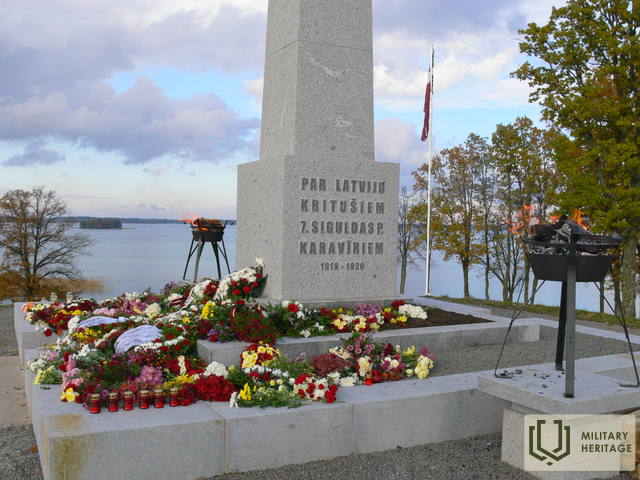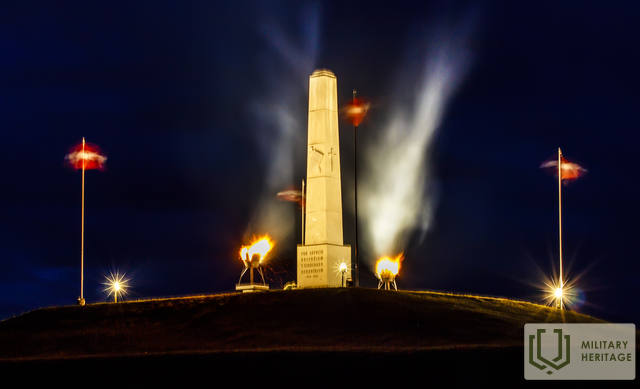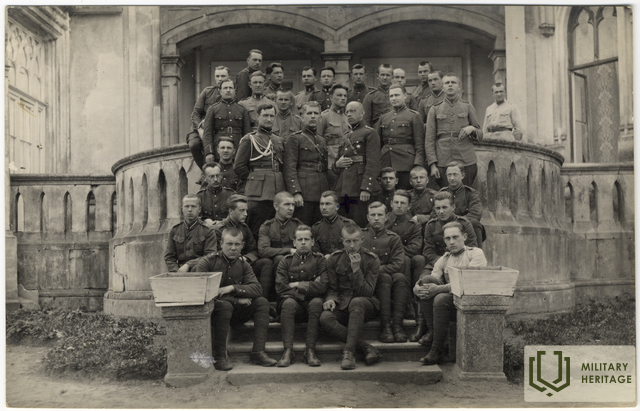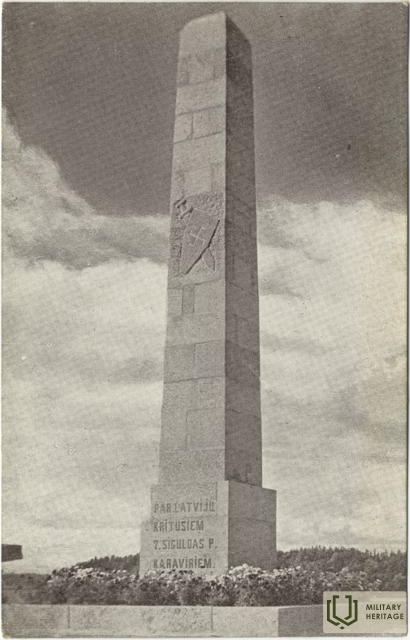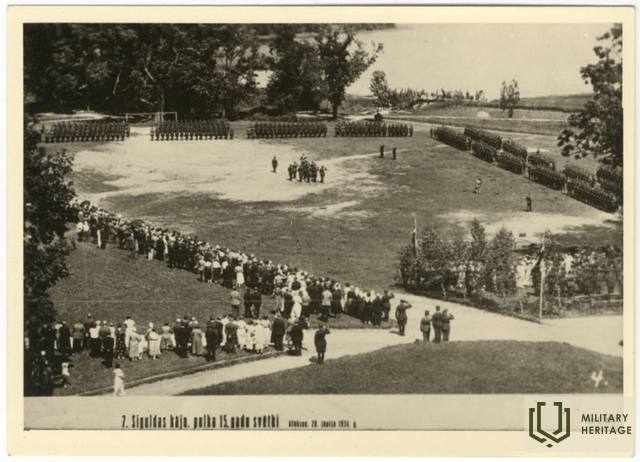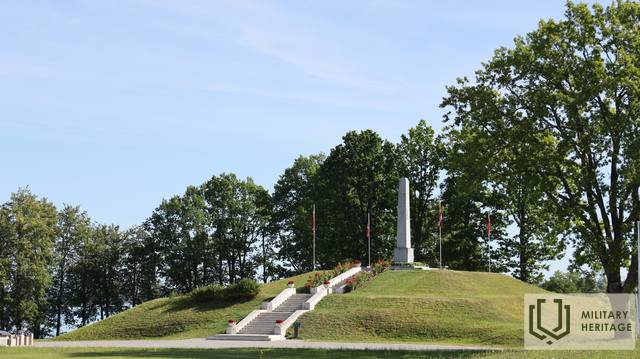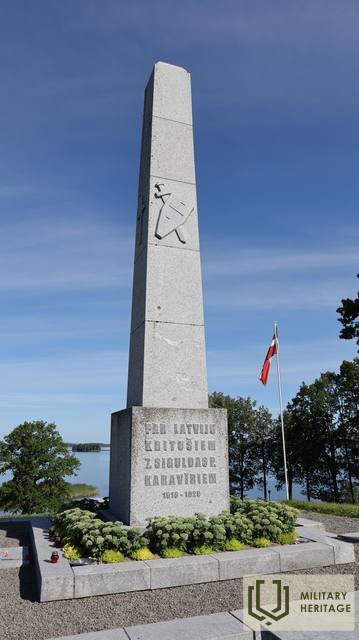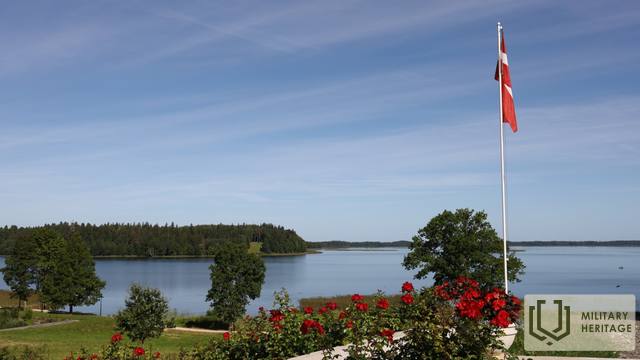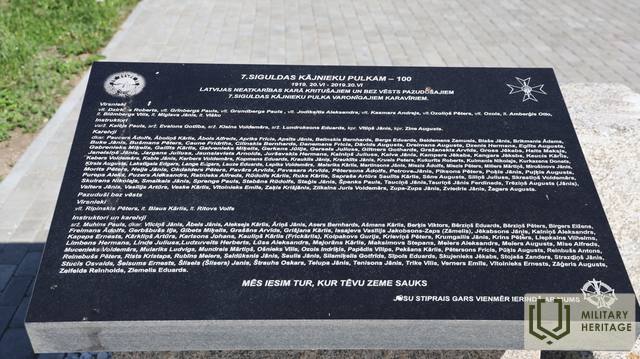Monument to the soldiers of the 7th Sigulda Infantry Regiment who fell in the Latvian War of Independence
Memorial site
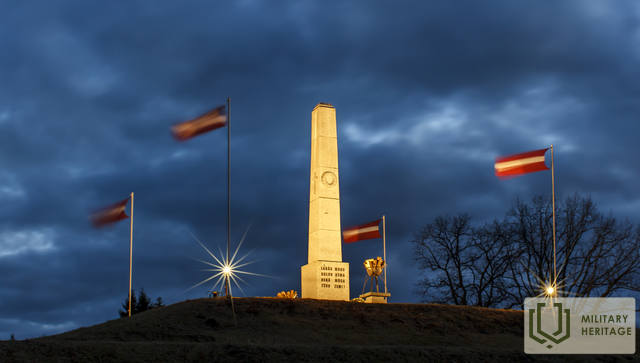

Located on the shore of Lake Alūksne, on the side of Pskevas Street (Kolberg Street).
On June 22, 1923, the President of Latvia, Jānis Čakste, unveiled a monument to the fallen soldiers of the 7th Sigulda Infantry Regiment. The monument was designed by artist Jūlijs Miesnieks.
The soldiers of the regiment also improved and maintained the area around the monument. The soldiers gathered at the monument on the eve of the regiment's anniversary celebration, when they lit the sacred fire, as well as on the day of the regiment's anniversary after the parade and intercession at the Garrison Cemetery.
In 1940/1941, the Bolsheviks removed and destroyed the plaque, but the monument itself was demolished in 1953 and its stones were built into the corner foundations of the barracks building.
As the Awakening began, the area around the destroyed monument, which was still located in the territory of the USSR occupation troops at the time, was cleaned up in the autumn of 1989. On November 11, a temporary granite memorial was unveiled at the former location of the monument, with the text engraved: "The monument to the 7th Sigulda Infantry Regiment will be restored at this location on November 11, 1989."
Thanks to the initiative of U. Veldre, head of the Alūksne Brothers' Cemetery Committee, restoration work on the monument was begun and the restored monument was unveiled on October 16, 2009.
Unlike the original monument, a cross was created on the obelisk instead of the regimental breastplate. Both reliefs of the monument were forged by sculptor Ainārs Zelčs. Both parts of the 22 original obelisk blocks, which were found on the territory of the Infantry School of the National Armed Forces, and newly made blocks were used for the restored monument.
On June 20, 2019, as part of the centenary events of the 7th Sigulda Infantry Regiment, a memorial site for the regiment's monument and a granite memorial plaque to the fallen soldiers of the unit were unveiled at the foot of the monument hill, engraved with the text: "Your strong spirit always ranks with us...". The memorial site was built with funds donated by the personnel of the Infantry School of the National Armed Forces.
Used sources and references:
Sigulda Regiment Memorial Fund. In memory of the Sigulda Regiment, 1919. 20.-VI 1959. Nebraska 1959, pp. 15-22.
Lismanis, J. 1915-1920. In memory of battles and fallen soldiers: Memorial sites of the First World War and the Latvian Liberation Struggle. Riga 1999, p. 18
The President of Latvia yesterday unveiled a renovated monument dedicated to the fallen soldiers of the 7th Sigulda Infantry Regiment in Alūksne. Available: eDruva: Cēsu and Vidzeme news. 17.10.2009.
Monument to the fallen soldiers of the 7th Sigulda Infantry Regiment in Alūksne. Cemeteries and memorial sites of Latvian soldiers. Available: https://karavirukapi.blogspot.com
Related timeline
Related topics
Related stories
7. Formation of the Sigulda Infantry Regiment
On June 20, 1919, the 7th Sigulda Infantry Regiment began to be formed in Naukšēni Manor, near Rūjiena, according to the order of the commander of the North Latvian Brigade, Colonel Jorģis Zemitāns. Initially, a small combat group consisting of 22 officers and 1,580 soldiers was formed from the reserve battalion of the North Latvian Brigade, which, in honor of its first commander Oskars Danker, was named the Danker Division. A few days later, the division was included in the 2nd Battalion of the 3rd Jelgava Regiment, and on August 23, with the addition of a company, it was included in the 7th Sigulda Infantry Regiment.
A moment of remembrance at the Garrison Cemetery
After the restoration of Latvia's independence, Uldis Veldre, head of the Alūksne Brothers' Cemetery Committee, took on the responsibility for maintaining the Garrison Cemetery, identifying the resting places of the LKOK related to Alūksne, and installing memorial signs in the Garrison Cemetery.






